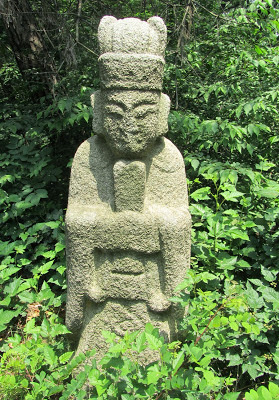This station finally opened last weekend, five years later. I decided to disembark from the train here yesterday evening to see how it looks. And to be honest... not very different at all.
Here's one view in 2009:

And here it is yesterday (the glass panels at right above have been removed):
2009:
 Yesterday (the gates are now installed, as is a convenience store):
Yesterday (the gates are now installed, as is a convenience store):That must be an interesting covenience store to work at, since there are almost no people getting off at the moment, though that will change over the next month or two when people start moving into the thousands of apartments that have been constructed over the past three years, which can be seen in the top right corner and center bottom section of this Google Maps satellite photo:
There are still more apartments to be built in the bottom right corner, as can be seen below, though the rest of the development will include research and development facilities. As well, the Gimpo Airport Emart, the immigration office in Mok-dong, and Gangseo district office will move here.
You might notice in the satellite photo above a large body of water. That was originally part of the Han River Renaissance Plan developed by former mayor Oh Se-hoon, before he blundered his way out of his job. The Magok development was to receive a lagoon connected to the Han River (by tunneling the Olympic Expressway under a water channel) as well as a lake park.

As the Renaissance Plan began to tank, the lagoon suddenly was reduced to a lake park:
A real estate agent showed me plans last October which made clear the plan had changed yet again, this time to a Botanical Park, with much of the water disappearing, allowing more room for buildings:
Also, ironically, in the station name 'Magongnaru,' the 'naru' part means 'port' or 'mooring' (for example, Yeouinaru), but now that the connection to the river is never to be constructed, the name is rather... incorrect. One wonders if it will ever be changed, or if it will stand as a testament to big development plans which were never realized.
I'm glad there's still some water, but there were also supposed to be canals throughout the Magok area (see below), but those have been turned into park space instead.
As for the construction of the apartments, I'm curious to see if the surrounding infrastructure will be ready in the next couple of weeks. Sidewalks still need to go in, roads still need to be paved, trees are still being put into park space (though most facilities within each apartment complex seem almost ready), but construction crews were quite busy yesterday, so I wouldn't be surprised if it looks ready in a week or two.
From the building on the left I took these photos last summer, including this one looking north (replacing this neighbourhood)...
... and this one looking south (or to the right two photos above):
The Magok area has had lots of construction going on in it for years now, with the construction of Line 9 and the AREX line taking place throughout it. The area used to have far more interesting neighbourhoods nearby, such as this one, which disappeared to make way for the Magok development.
Needless to say, up until five or six years ago, the area used to be far more scenic; for some reason I preferred these summer and fall views...

... to this one taken in about the same spot yesterday:
Likewise, I preferred this spring view...

... to this one taken yesterday (you can make out the same apartments in the distance, and the open space you see is the same open space at the right in this photo):
There are some benefits, however. In the photo below is another complex beginning construction on the right, while at left are two finished complexes as well as a new building that the nearby Gonghang Elementary School will move into, replacing the 30-year-old building 200 meters away (the demolition of which will allow another apartment complex to be built). A friend who works at the school is looking forward to working in the new school.
Still, I miss bike rides though the Magok that once was...

























